How to Make Homemade Limoncello
 July 3, 2012
July 3, 2012 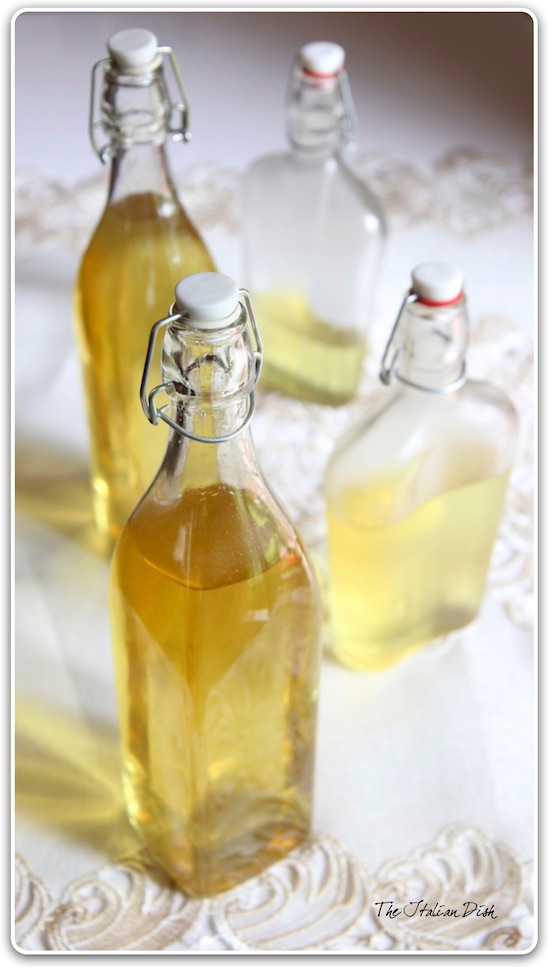
The minute we got back from the Amalfi Coast, Brian wanted to make homemade limoncello. When you go out to dinner in any of the towns in that area, they serve you little shots of icy cold limoncello after dinner - you know Italians and their wonderful digestifs obsession. You get used to it pretty easily. It's a nice custom. So we started researching recipes when we got back.

There are a lot of recipes out there for making homemade limoncello, but basically all you do is take the zest of lemons and steep them in vodka or grain alcohol for a certain amount of time and then strain the liquid. You then add simple syrup (sugar water) to the alcohol and then let that sit for a few days. That's really all there is to it. The big differences really come from the quality of lemons that you have and how much sugar you add to your concoction. The amount of sugar is really up to you and how sweet you like this - a good reason to experiment with a couple of batches!
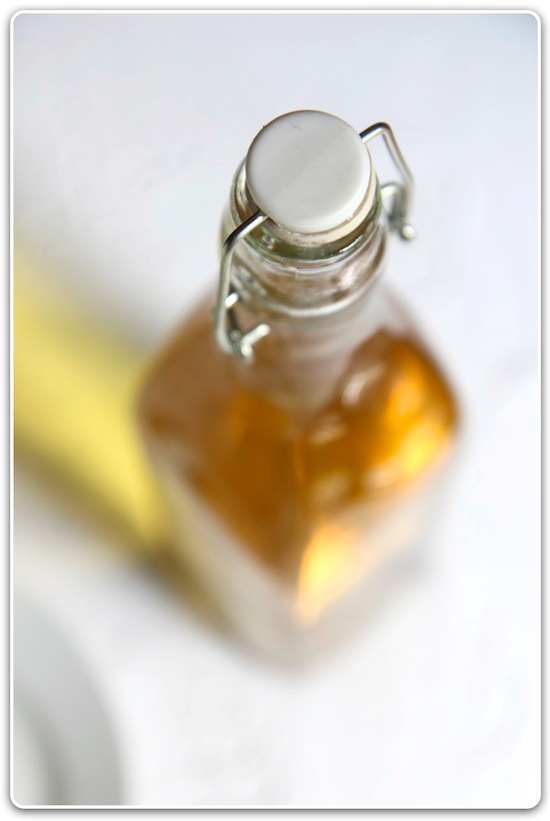
We settled on a recipe from a very authentic source - Mamma Agata. Mamma Agata lives in the beautiful town of Ravello on the Amalfi Coast. Her family has lived there for generations. She has cooked all her life and now runs a cooking school out of her home there, which is quite well known. She has cooked for a number of celebrities and has a lot of interesting stories. She was kind enough to send me a copy of her wonderful cookbook. This is her recipe for limoncello and we found it to be really delicious - not overly sweet but just right.
On the Amalfi coast, the lemons are, of course, incredible - you won't be able to replicate that over here. But you can certainly make very good limoncello. Buy organic lemons if you can, since the peel is what you will be using.
Once you have homemade limoncello, you can make these absolutely delicious Lemon Capri Cocktails. They are great to serve to guests after dinner:
What to do with all the lemons after you are done zesting them for the limoncello? I made a big batch of lemon sorbet and a batch of homemade lemonade.
Homemade Limoncello
(lemon liqueur)
from Mamma Agata's cookbook
for a printable recipe click here
you will need a large glass jar
Ingredients:
- zest of 6 or 7 large organic lemons
- 1 litre or quart of pure grain alcohol or vodka
- 5 cups (1250 ml) water
- 3 cups (700 gr) sugar
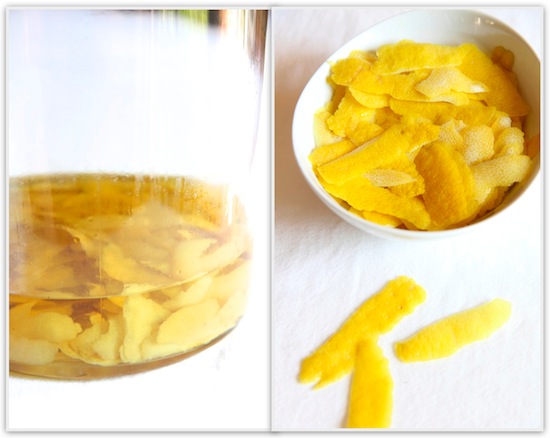
Instructions:
Peel the zest from the lemons with a vegtable peeler and place them into a large glass jar. Try to avoid the bitter white pith of the lemon skin, under the yellow zest.
Add the alcohol to the jar with the lemon zest.
Cover the glass jar with plastic wrap and store it in a cool place for 7 days.
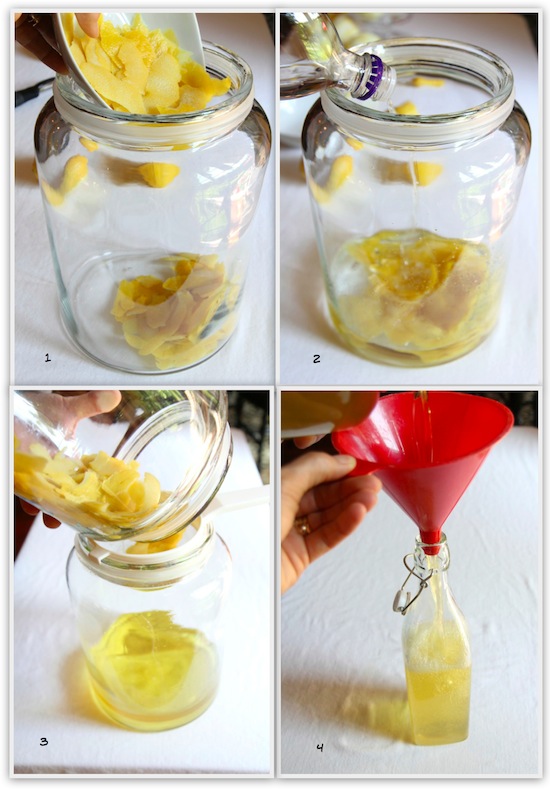
1. Place lemon peels in large glass jar. 2. Pour alcohol over lemon peels
3. After seven days, strain the alcohol from the peels 4. Add simple syrup and pour into bottles
On the sixth day: Boil the water and add the sugar to the boiling water. Stir the sugar until it is fully dissolved in the water. Set the sugar syrup aside to let it cool over night.
On the seventh day: Strain the lemons peels from the alcohol and discard the peels.
Pour the sugar syrup into the glass jar with the alcohol and stir well.
Serve chilled, from the refrigerator or freezer.
NOTE: The limoncello will keep for one to two years. Store it in bottles with a cap or cork in your bar or cellar. When you want to drink it, chill the limoncello in the refrigerator or freezer before serving.
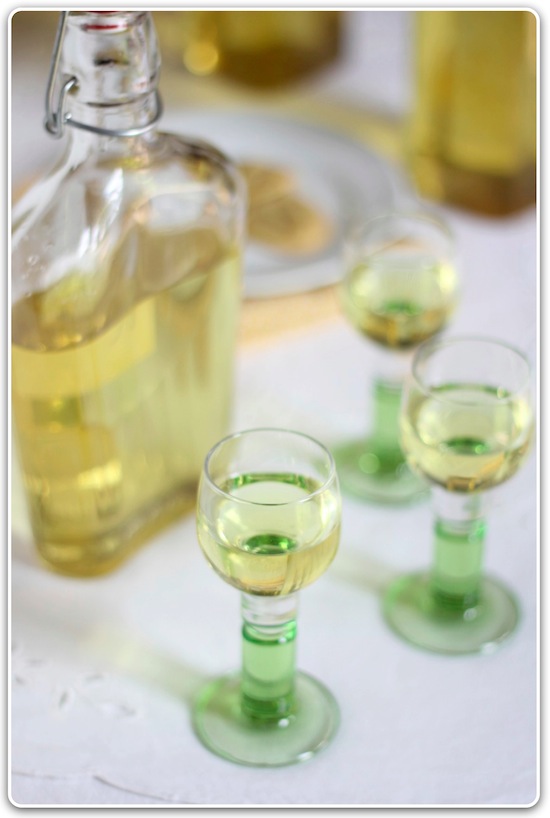

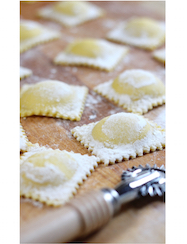
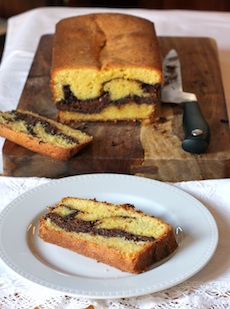

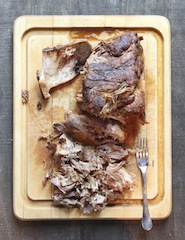
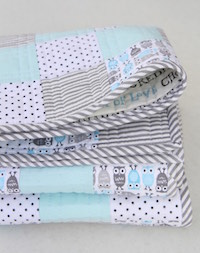




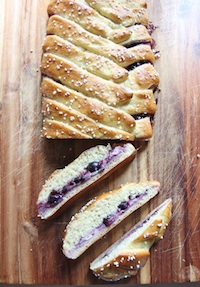
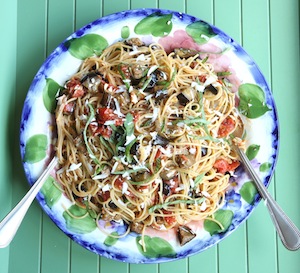
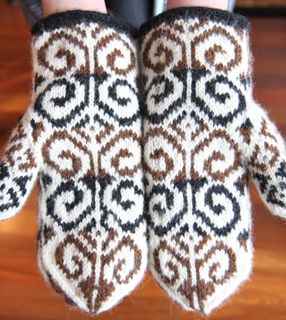
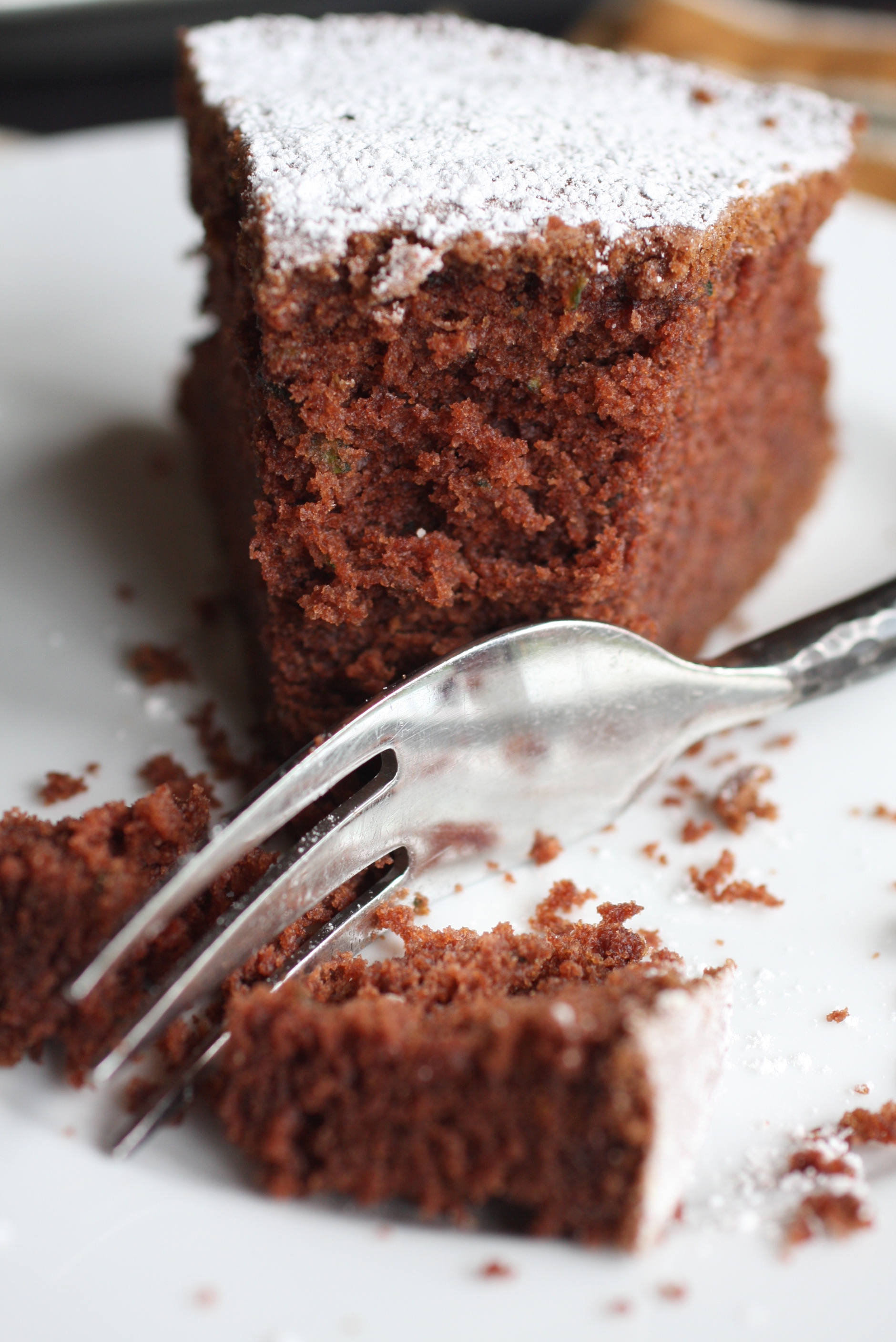
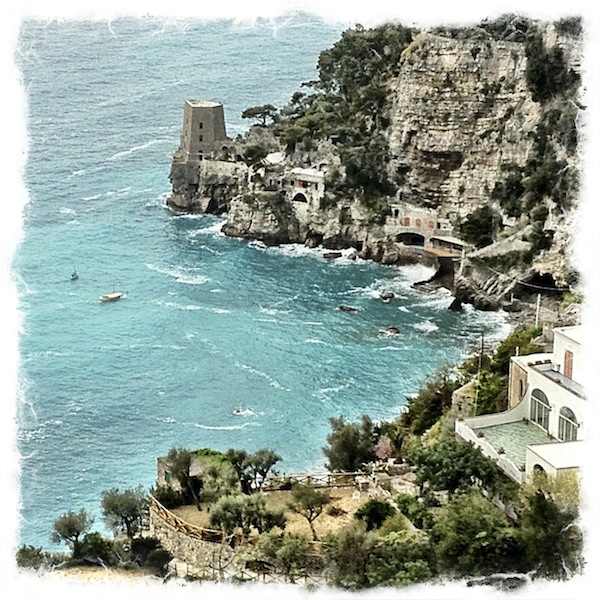


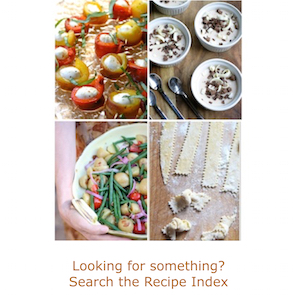
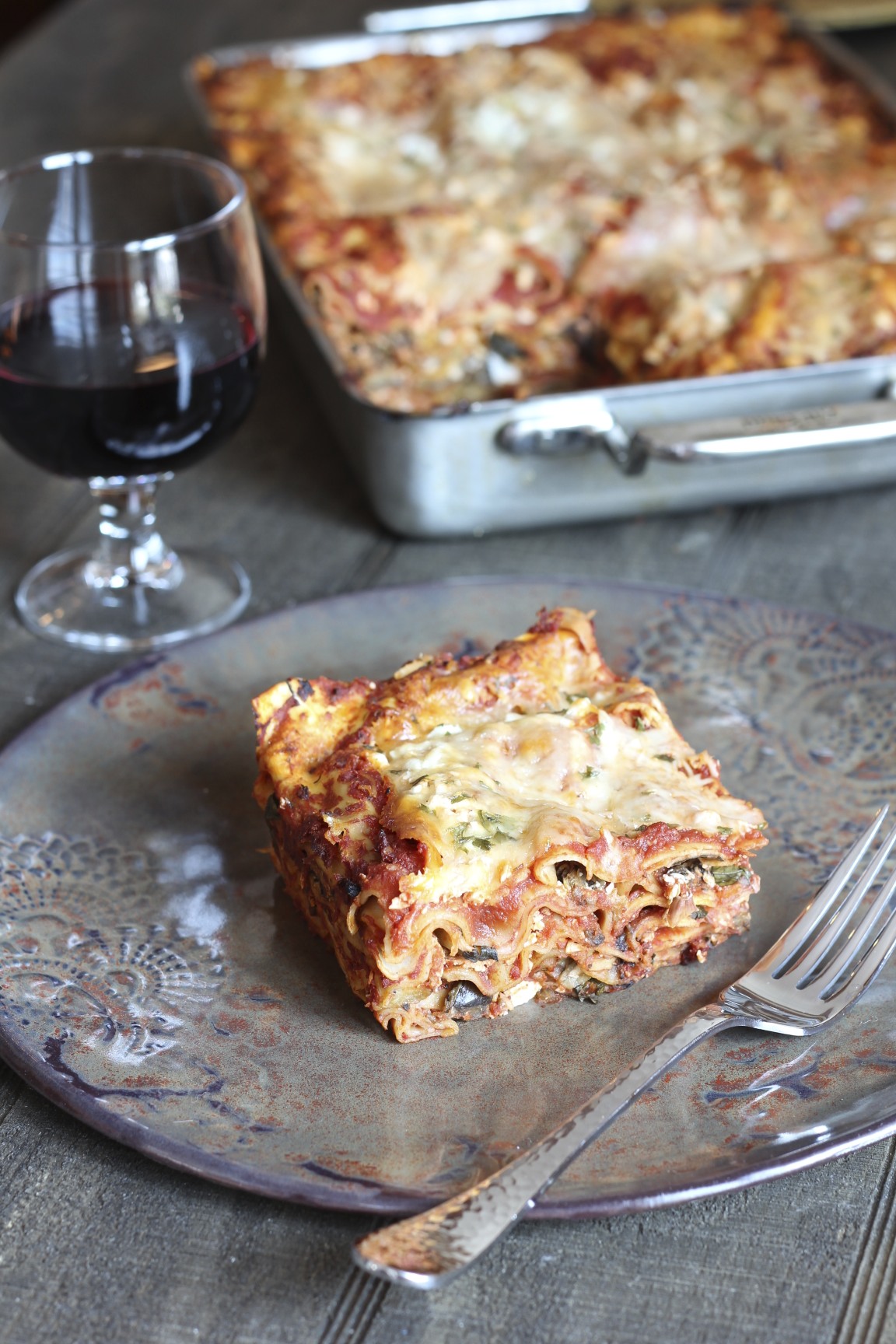
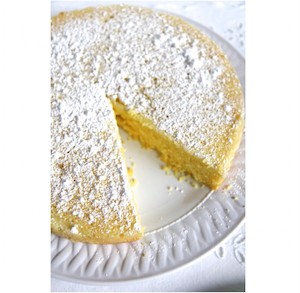
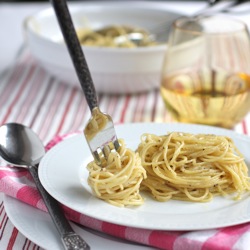

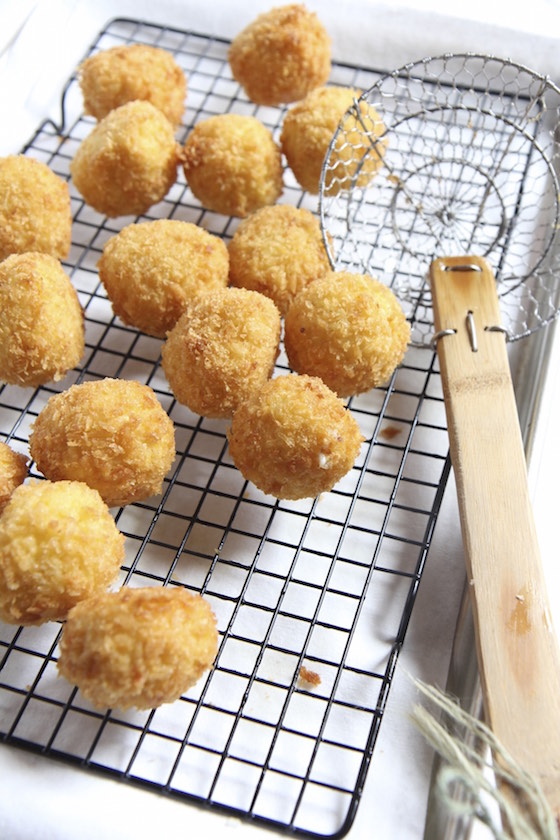


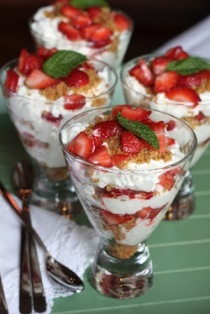
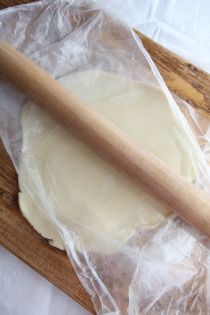
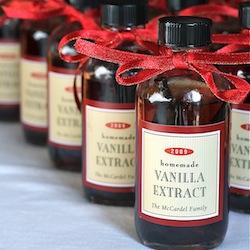
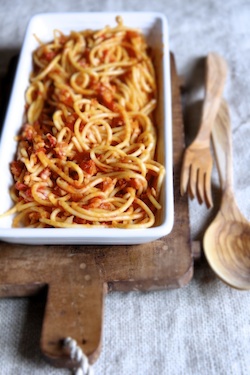

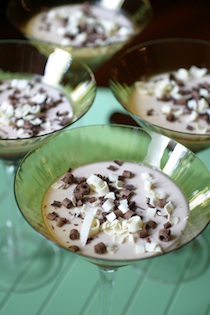
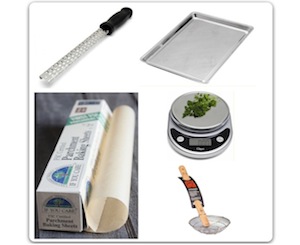








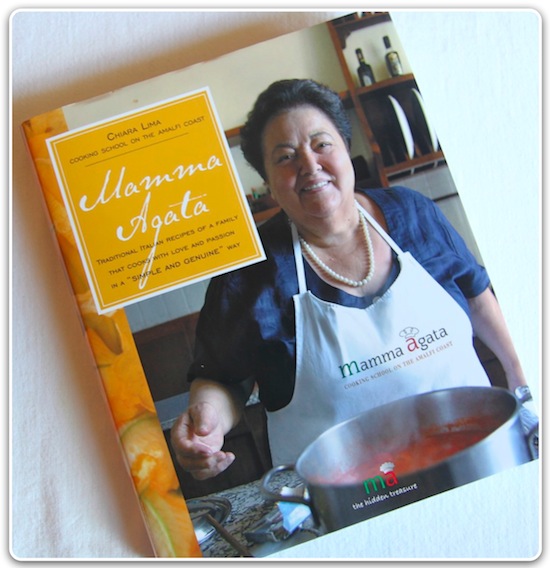
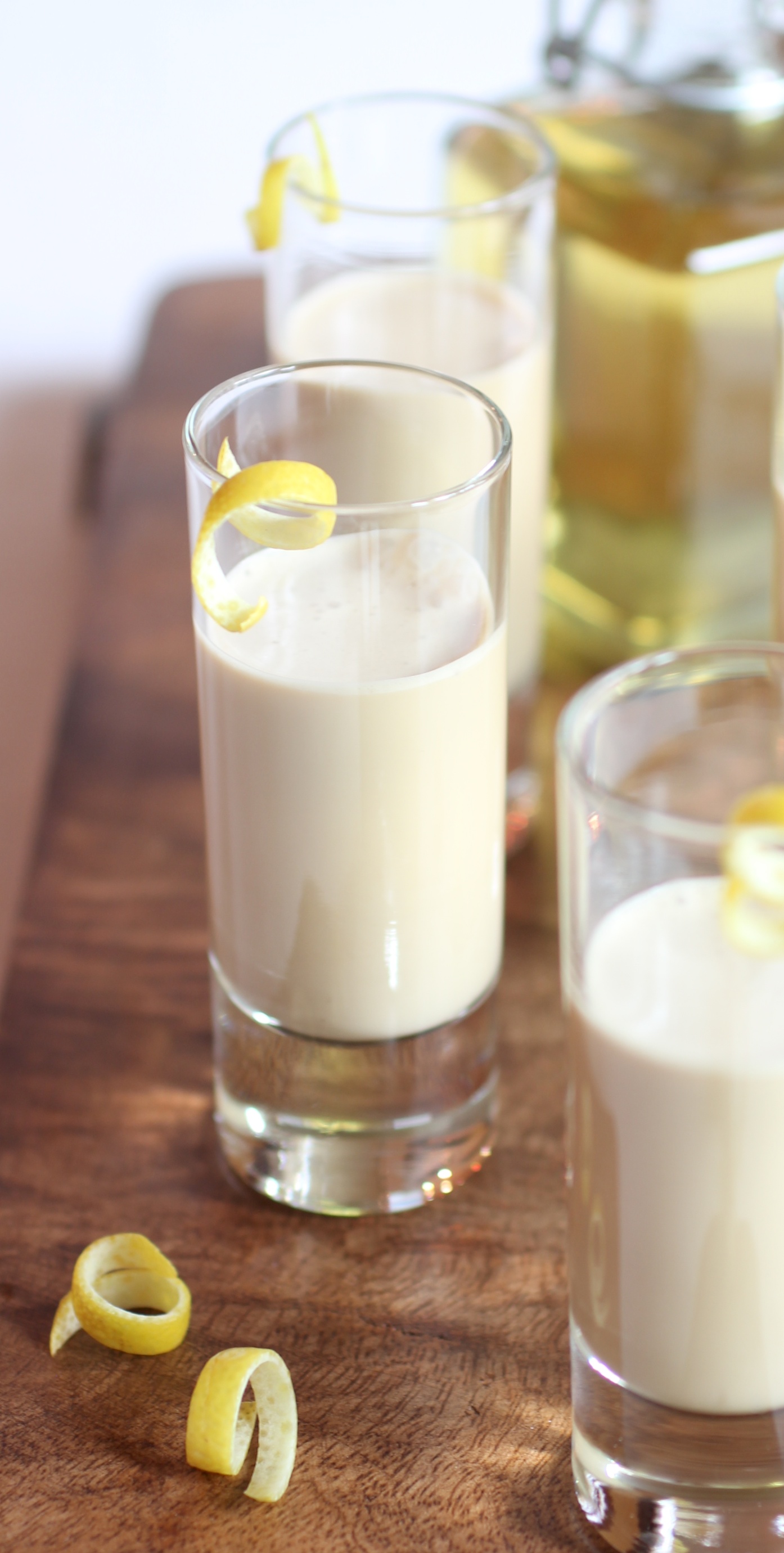

Reader Comments (111)
Love your blog! Was inspired to try this, so today was the day to combine the drained lemon infused everclear and the sugar water, and when I did, it immediately went from clear to cloudy...a pretty, yellow cloudiness like that of a crayon:/ Is it still good?
I love lemons, but wonder how it would taste if you followed the same recipe and used limes! Might be pretty for St. Patrick's day!!! Anyone ever try that???
I love your site Italian Dish. I am in he process of making Limoncello, I used 1 liter of 190 proof grain alcohol. and peeled 17 lemons. That was tedious. I used so many lemons because I knew that with grain alcohol I was going to have to dilute it a lot more than vodka and did not want t lose the lemony flavor. It soaked from Labor Day until today, October 20th. What a beautiful yellow. Today I drained off the lemon peel. Added 2 - 16 ounce bottles of spring water which immediately turned the whole thing cloudy. No worries, I expected that. Took another 16 ounce bottle of spring water, added two cups sugar and made a simple syrup. Added that to the mixture and now I'll let it sit until near Christmas. I did take a taste and I have t say it was amazing!
The above recipe is more or less the same as the one i have .The only thing i do diferrent, is that once the lemoncelo is complette i put the bottles in the freezer over night.After that i keep it in the frige so when i wish to serve it i don't have to cool it because is ready
Why couldn't you use all (or some) of the lemon juice for making the Limoncello (instead of some of the water)? Wouldn't it make it more tart and exciting?
I'm sure grain alcohol would be better but in many U.S. States you cannot get it so we have to settle for vodka. I'm working on a batch right now and I've noticed about half the recipes have you strain the peels out before adding the simple syrup and others say leave the peels in while you let everything sit for a month. Any ideas on which works better?
Cindi, I did as you suggested, using only half of the original Limoncello to mix with the lemon juice. I also added a bit more of the simple syrup. A different take on it, certainly, but it is delicious!
A magic mixture that takes you straight back to lunch under the olive trees in Toscano
DO NOT DO NOT DO NOT use vodka. Not the same. Use Everclear or another grain alcohol. You'll be surprised the difference in flavor profile! More authentic flavor and try to use organic lemons. Yes, organic lemons are a bit more expensive but you will be putting this in your body so it's worth it. If you ever come across the Italian lemons, snatch those up as well. Meyer lemon makes a better flavor and color out of all the lemons here in the U.S.
I just finished adding the simple syrup to the lemon alcohol after straining it through the leg of some pantyhose. Both the syrup and alcohol were clear but when I combined them, I ended up with a cloudy yellow mixture. So disappointed as all the pictures show a clear yellow color. Can anyone comment on what when wrong? Has anyone else experienced this? It tastes OK but I was going to make party favors with it and am thinking maybe I need to start over. Thanks for any insight!
@Llongan - I think the cloudy yellow is completely normal. It happened instantly the second we mixed the two clear liquids. I took it to be some chemistry magic. From what I've seen on the web, this is to be expected. Everyone loved ours, it was a huge success. We did follow some of the other commenters and used less sugar than was called for. The 5 cups water and 3 1/2 cups sugar made about 7 cups of simple syrup. We put in 3 1/2 cups of simple syrup into the vodka/lemon mix. Next time I'm thinking of using even less. It was still very sweet but still delicious.
And yes, we know we should have used Everclear. We were just too used to living in states where you can't buy it that we assumed it wasn't an option so we used 100 proof Vodka. I've since found we can get Everclear in TX so we'll use that next time.
Now for something very interesting; if you like Limoncello you will love pompelmocello (grapefruit liqueur) just use the limoncello recipe and use one third the number of grapefruit instead of lemons. You can also try limes (1:1) for limoncello verde or oranges (1:2) for aranciello. I've done them all and grapefruit got the most praise.
I'm making some limoncello based on this recipe right now. The only thing I've changed is that I'm going to let it sit for about 14 days (instead of 7).
I'm just wondering what the end result will be in %age alcohol.
Yesterday I made aubergines preserved in lemon juice from Gennaro's Italian Kitchen (Gennaro Contaldo) and today have started making limoncello with the discarded pith. I am really looking forward to eating and drinking both. I was lucky enough to holiday on the Amalfie Coast last year and visited Ravello. Hoping for some rekindled memories induced by the lemons. The limoncello already smells authentic! Thank you for sharing the recipe.
Last year I used bergamots to make my Lemoncello and it came out to be great chilled digestif drink trough the entire year. This year I am using lemon to make it and maybe next year orange. Who knows? It is so fun, easy and delicious!
Hi, thank you for this lovelly receipe. All others seems soooo complicated!
I just wonder why not use the lemon juice also in the mix?
Hi, Love your recipe! I have a rather unique question... We started a batch of limoncello with everclear and organic lemon zest which has been steeping for over a year in a cool, basement closet. We forgot about it and want to know if it is still okay to proceed adding the simple syrup, straining, bottling, and enjoying it!
Thank you!
Hi, Love your recipe! I have a rather unique question... We started a batch of limoncello with everclear and organic lemon zest which has been steeping for over a year in a cool, basement closet. We forgot about it and want to know if it is still okay to proceed adding the simple syrup, straining, bottling, and enjoying it!
Thank you!
I have just candied lemon peels from 3 lemons (pith removed, blanched 3 times in fresh water, then simmered for 1 hour in 2c sugar/ 2c water). In the past, I have used the lemon flavored simple syrup left over from this candying process to make lemon drop martinis (mmm, so good)! Is there any reason I should not use the syrup in this limoncello recipe? I can add some water to thin it out somewhat and bring the volume up to the amount of syrup suggested in this recipe.
From The Italian Dish:
Michaela: You know, I really don't know - almost every recipe for limoncello uses just the zest of the lemon. That is where the big concentration of flavor is found.
Janie: I would imagine that Everclear is going to have a very very strong lemon flavor. It should make pretty awesome limoncello! You may have to dilute with a little more water. I would make the batch and then taste and adjust.
Cindy: I don't see why you couldn't use this make a limoncello. Should be very tasty!
Hi ,
I just finished making first batch of limoncello by following your recipe but it has frozen in the freezer? Is this normal with this recipe/ amount of water? Or is my freezer temp down to low?
Regards,
Nath
From The Italian Dish:
Nath: I do not keep mine in the freezer - I keep it in the refrigerator. So I don't know about it freezing, but I would have thought that the alcohol in the limoncello would not have allowed it to freeze!
I have been making limoncello for a few years now, also lime (GREAT), orange and grapefruit. Meyer Lemon was a let down, poor lemon flavor. I have two thoughts: 1. when making the sugar syrup, put the citrus peels into the syrup while you are boiling it, so you get a bit of the flavor from the peels in the syrup, and 2. you also now have some WONDERFUL sugared citrus peels to use in your baking or what ever (sweet focaccia - check out my web site, go to the foundry site (bottom picture) and look in the cooking page). We make the sweet focaccia for open gallery nights, as well as the garlic or leek or onion or sweet pepper focaccia for "gallery walker" nibbles. If I operated a B&B, this sweet focaccia would be a daily served breakfast bread. Great recipes!! Thank you for posting them.
From The Italian Dish:
John D.: Thanks for the limoncello tips - I especially like the one about putting the peels in with the sugar syrup while boiling. Great idea!
After bringing lemoncello back from beautiful Almafi several times found this recipe. Was doubtful but excited. Not as great but with exceptions being in bluegrass of Kentucky was very pleased. My friends thought I and their drink great. I will keep the cellar full. Thanks.
I live in Australia. Very strict laws re sale of alcohol and grain alcohol not available, although the truth is that the large Italian population always knows someone who (illegally ) distils it. I use a polish rectified spirit available in some wholesale outlets which is 95 percent. After three days macerating the rind is white and hard and the alcohol bright yellow. I leave it for seven days. I have left it for longer but have found no taste improvement after the longer time. Otherwise my recipe is the same as yours and it is always super good. Despite their insistence that only grain alcohol should be used, my Italian friends dont pick the difference and always say it is authentic.
I live in Australia. Very strict laws re sale of alcohol and grain alcohol not available, although the truth is that the large Italian population always knows someone who (illegally ) distils it. I use a polish rectified spirit available in some wholesale outlets which is 95 percent. After three days macerating the rind is white and hard and the alcohol bright yellow. I leave it for seven days. I have left it for longer but have found no taste improvement after the longer time. Otherwise my recipe is the same as yours and it is always super good. Despite their insistence that only grain alcohol should be used, my Italian friends dont pick the difference and always say it is authentic. I have made it from Lisbon and Myer lemons grown on the mainland but the best lemons are gathered from our holiday property on Kangaroo Island off the coast of South Australia. These are rich yellow, large and have a knobbly skin and a very oily and fragrant zest. The tree came with the property so I don't know the variety but they really are the secret of my limoncello success .
I love to try this. If I use grain alcohol, what is the min % of alcohol I should use?
Tracy, first be sure you know the difference between proof and % as 100% alcohol is 200 proof. The term "proof" came from the fact that a 50% water/alcohol mix will still burn so that was "proof" that the mix was at least 50 Alcohol. As to what is needed for a stable mix at, I am assuming, room temperature, 14-16% will give a stable mix. HOWEVER for delicate products, there will be more degredation of flavors/boquets with the lower concentration. Also a VERY IMPORTANT dditional aspect is the amount of "headspace" or air in the bottle. The more air, the more the potential "problem". The oxygen in the air will cause a good deal of oxidation and thus reduce a lot of the delicate smells and flavors. Sorry for the technical stuff,,,,,,, but you did ask,,,,, I just might have answered in more detail than you were actually after. Happy making and consuming!!
Thanks for the recipe. Will try it out.
Thought I would clear up the 'grain alcohol' versus 'vodka' debate.
Vodka is simply a neutral spirit - it can be made from anything grain, grape, cane, potato, whey etc. Grain alcohol is vodka, and vodka is grain alcohol.
While there are vodkas made from different base materials - such as potato. The most common form of vodka is likely to be made from grain (be it wheat, barley or corn).
Grain was traditionally viewed as superior as it has the most 'neutral' flavour. But with modern day distillation plants, it's of little importance.
Use the cheapest vodka you can find. The lower the strength, the longer the maceration.
I decided after I made the simple syrup to pour it over the remaining lemon peels that I strained from the grain alcohol. Figured it couldn't hurt. Hopefully.... it is still cooling. Also I had 2 jars steeping, one grain and one vodka. I agree with another post that the grain seemed to be more yellow, thus soaking up more lemon flavor. Can't wait to mix up the simple syrup with the grain. I'm letting the vodka mixture go another week. I had to do something with all of the lemons from my tree.
I like to cook and have been using the "sugars" peels from lemon, lime (really good), orange and grapefruit as a "flavoring in a sweet, buttery, chello flavored Focaccia. It is a very popular item at the art walks in the gallery my wife's work is in. Also a hit at parties we take it to. I also make "regular" Focaccia (onion, garlic, bell pepper, what ever,,,,,). Recipe is in the Foundry site if you go to our URL (the part to the right of the @ in my e amil address) Also Ciabatta bund and other items are in the cooking section of the foundry site. Great group here!!!!!
I followed your recipe and used organic lemons, organic sugar less than listed..just about 2 cups and 100 proof very good vodka. It was perfect. I didn't want to use grain alcohol. I understand that's what was called for in the Italian traditional version but I didn't want it too strong. The 100 proof expensive vodka was great. I am Italian I may eventually make a batch the traditional way, but I was doubling your recipe & giving as gifts. I didn't want it too strong..it was delicious.
Using different Proof alcohol sources is not really a problem. 100 Proof is 50% alcohol, 200 proof bing pure alcohol. One can change/lower the proof/% alcohol of a Chello just by adding water to get the proof/% wanted. In fact that is what is being done with the Vodkas or most any other distilled spirit as the alcohol is almost always distilled to be as close to 100% alcohol as possible and this is true with either column or pot distillates. If the "beverage" is to be aged, this is usually done at the highest proof possible, then upon bottling preparation, the aged spirit is then "diluted" with water to the wanted/needed proof/%. Simple math can be used to figure the amount of spirit and water need to be combined to get the proof/% one wants in the finished product (just remember if you are working with PROOF that 100 PROOF is actually 50% alcohol!!!). There may be some differing nuances between alcohols from differing fermented products (grain, potato, grape, fruits, etc) but the lemon acids, flavonoids and other extracts from the peel will pretty much overwhelm and differences in the "taste/bouquet" of the alcohol being used.
Here in the UK we can't get grain alcohol, so I used over proof rum and vodka. Would be a mix of 80% + 120% alcohol. Other than that I followed the recipe to the letter. My Italian waiter friend wasn't happy I used rum but it tasted very good. I think the key thing is the quality of your lemons. The rum was actually nice!!
I found the comments very informative, but one thing puzzles me : how much zest do you really use? Lemons come in a variety of sizes and shapes (oval to round) which will alter the amount of zest by fruit count. Does anyone have a weight per liter(quart) of zest for the initial extraction of flavor? Thanks !
Bruce,
To a degree, it sovsnt matter, at least if there is more rather than less, as you can dilute with alcohol and/or sugar syrup or even water if you have enough Proof to allow further dilution and still maintain a stable product. The amount of peel is, to me, not really an issues as much as how much sugar you are going to use (more or less sweet to your taste). I often keep adding peels to a quart jar with alcohol as needed to keep things relatively covered, and adjust the mix when making some end product for someone. Also don't forget that you can use most any citrus (lemon, lime, orange, grapefruit, etc.) to make this sort of liquor.
Hope this helps.
John
Thanks for the recipe. I am making it and wondered if I could use lemon juice to replace the water? Thanks.
How about making the simple syrup with ½ water and ½ lemon juice. Do you think this would work?
I do not think it would give you any real added flavor and if it did, the flavor of the juice is very different from the flavor derived from the peel. What are you trying to "get" by using the juice in the syrup? Put the used peels into the syrup while boiling it to get a bit more flavor but to also sugar the peels then use the peels in baking.
i visited Tuscany and lucca. I got hooked on limoncello
I have it here in Canada. I love this liqueur.
Thank you for the recipe.
Mayer lemons, supermarket lemons, all work. Just use whatever tastes good to you! Not sure why recipes are so excited about just using zest. Yes you do need it but if you avoid the white rinds and pipes, all is well. Agave syrup is just fine, honey works less well. I would recommend making a concentrate and then diluting it as required.
Just started my annual batch of Limoncello yesterday. I let the lemon zest stay in the jars with the vodka (100 proof) for at least 4 weeks. Problem is, I just ran out of last years batch at a patio party on Labor Day so it's going to be hard to wait for a month......but I will. Everyone I know prefers my home made Limoncello over anything they buy in the store and it's always fun to share it with someone who hasn't had the home made beofre.
Just wanted to say, I've made your limoncello twice now, both times with grain alcohol (Everclear), and it is SO delicious. People I know who have lived in Italy say it's exactly like the real thing made there. I become the star of any party I bring it to. In fact I'm sipping some now as I write this, and I was just now reading the comments on your vanilla extract recipe. I'm going to try that next. Bravissima!
Elaine, the limoncello is so delicious. I have just started another batch. Please tell us about how many OUNCES the lemon zest should weigh. It would take the guesswork out. In small towns, organic lemons are not always easy to find. Mine had some small brown spots on them, and I peeled around the spots. Also "6 or 7 large lemons" doesn't help alot; most of mine were medium or small. Knowing the WEIGHT of the zest would help immensely! Your Italiandishblog is wonderful. I will bookmark it and visit often!
Elizabeth
From The Italian Dish:
Elizabeth: Sorry, I can't help you with how many ounces the lemon zests is going to weigh - have never weighed it! It's no going to weigh much at all. If you can't find organic lemons, just buy regular and wash well.
Thanks a lot! We just finished our first batch according to your instructions and it's amazing!
Elizabeth,
Start with what ever number of Lemons you have/are going to use and the zest from those lemons, and if you think you might not have enough fruit, use less alcohol for the extraction. Once you have the alcohol and extracted "goodness", and you add the quantity of sugar syrup and , if needed, additional water (I use added water as I extract with the highest proof Everclear I can get which is about 190 proof or 80% alcohol) and taste test the results. To me, the amount of sugar one adds has more to do with the end results being better or worse, than the amount of lemon zest. To me the GREAT THING about making one's own goodies like this, is YOU are in control of the end product and in most cases, you can play with all "additions" until the results are what YOU like!!! I know this did not answer your question but I hope it gives you some idea of the leeway YOU have with this sort of thing. The only thing a person needs to be aware of is NOT getting the alcohol diluted down to an unstable level. Keep it about 20% by volume and there is no concern about re-fermentation (actually 14-15% alcohol will stop further fermentation in most all cases, the bit additional alcohol will give a more flavor/color/bouquet stable product). Good luck!!!
How much in liters does this batch make... can you leave the zest longer in the alcohol if so would it make a difference... when I make sour cherry liquor i leave the cherries in sugar for 2 months before adding grain alcohol and water then leave that for another 2 months before straining...the longer it infuses the better...